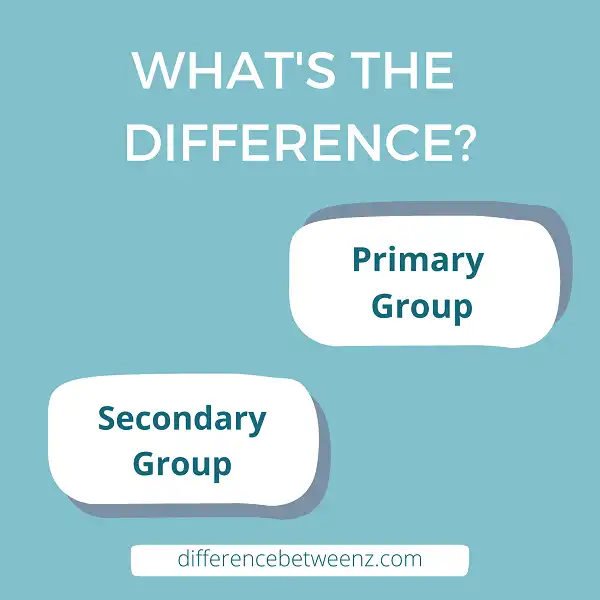When it comes to groups, there are two main types: primary and secondary. While both have their own unique purposes, they differ in a few significant ways. In this post, we’ll explore the key differences between primary and secondary groups. By understanding the difference, you can better identify which type of group is right for your needs. Primary groups are typically smaller and more intimate, while secondary groups are larger and more diverse. Primary groups are typically formed around strong personal relationships, while secondary groups often serve more functional purposes. Lastly, primary groups focus on socializing and developing relationships, while secondary groups emphasize task accomplishment.
What is Primary Group?
Primary groups are small, intimate groups that are characterized by close, personal relationships. These groups are typically made up of family members, friends, or co-workers who interact on a regular basis. Primary groups play an important role in socialization, providing individuals with a sense of belonging and identity. In addition, primary groups often provide emotional support and guidance during times of need. As such, they can be an essential source of stability and security in our lives. While primary groups can be a positive force, they can also exert a negative influence. For example, if members of a primary group engage in criminal or anti-social behavior, individuals within the group may be more likely to do likewise.
What is Secondary Group?
Secondary groups are social groups that are less intimate than primary groups. Secondary groups typically have looser relationships and narrower emotional bonds than primary groups. They may include co-workers, classmates, or people with similar interests. Secondary groups often form around a specific purpose or goal, such as work or school. While secondary groups are not as close as primary groups, they still provide important social functions. They can give people a sense of identity and community, and they can provide support and networking opportunities. Secondary group interactions are typically more formal than primary group interactions. This can be seen in the way people dress or speak to one another. Secondary group members may also have different roles and status within the group. For example, a teacher may have authority over her students, or a boss may have authority over his employees.
Difference between Primary Group and Secondary Group
Primary groups are typically small, intimate groups characterized by strong personal relationships. In contrast, secondary groups are usually larger and less personal, with relationships that are based more on impersonal factors like shared interest or goals. Primary groups are often made up of family members or close friends, while secondary groups can include coworkers, classmates, or club members. Primary group relations are typically more supportive and intimate, while secondary group relations are generally more formal and task-oriented. Primary groups tend to have a stronger influence on individual behavior and attitudes, while secondary groups typically have less impact. Primary groups are an important source of social support and interaction, but secondary groups can also provide important opportunities for networking and skill development.
Conclusion
The primary group is the first and most important social group to an individual. It is usually composed of people who are closest to them, such as family members and friends. Secondary groups are more loosely connected and often have less significance to the individual than their primary group does. They can be based on a shared interest, occupation, or geographical location. By understanding the difference between these two types of groups, you can create marketing content that resonates with your target audience and drives sales.


